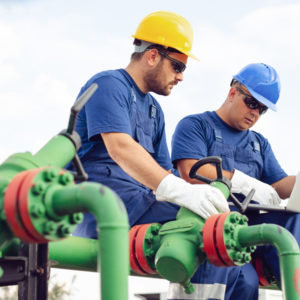Record natural gas and oil production is the MVP of a booming U.S. economy — supporting 10.3 million jobs and keeping energy affordable for families and businesses. Delivering that energy efficiently to communities across the nation is essential to ensuring benefits reach every American family, and pipelines are the safest, most environmentally sound way to do that. That’s why the president’s new Executive Order boosting energy infrastructure is both smart economic and environmental policy.
We’re producing more energy in more places than ever before. And existing infrastructure, mostly designed to transport imported energy inland from the coasts, can’t keep up. It’s the best kind of problem to have because the solution — build more infrastructure — is simple, and it’s a guaranteed job creator.
Building the infrastructure we need to keep pace with record energy production can support up to 1 million-plus jobs per year by 2035 — jobs building pipelines, and jobs transforming natural gas import facilities into export terminals — one of the best illustrations of the dramatic turnaround in U.S. energy fortunes.
Job opportunities extend beyond the energy industry. Thirty-two percent of the construction industry workforce is employed on energy projects, which generate economic activity throughout the supply chain.
Affordable energy is also bringing — or in some cases, restoring — manufacturing jobs to struggling towns. Citing energy savings, the chemical manufacturing industry alone has announced enough planned investments to support a projected 786,000 U.S. jobs — more than the population of Detroit.
One of those investments is a new manufacturing plant going up in Pennsylvania, home of the Marcellus Shale. Producing plastic for everything from food packaging to auto parts, the plant will generate 6,000 jobs during construction and 600 permanent jobs in a community hit hard by previous plant closures. As a local put it: “Now kids growing up here have a reason to stay home and get a decent job.”
That same story is playing out in state after state.
In Texas, JSW Steel just announced a $500 million investment, citing “access to natural gas at extremely economical prices” as a driver. A steel plant in Louisiana that packed up and relocated to Trinidad in 2004 is back — for the same reason. So pipelines aren’t just a conduit for energy; they can be a lifeline for stalled economies.
But government red tape can be a barrier. The typical pipeline approval process involves up to half a dozen federal agencies, at least as many federal laws, and multiple state agencies. The Keystone XL pipeline has famously undergone 10 years of review, passing six separate environmental assessments — the majority of them approved under the Obama administration.
The natural gas and oil industry supports a robust regulatory process, and we coordinate fully with federal and state regulators, and local stakeholders, to get it right. But exhaustive doesn’t have to mean impassable. The reforms just announced by the administration aim to make the process more efficient, reducing a growing backlog of projects stuck in bureaucratic limbo.
For instance, no fewer than three federal agencies — the Environmental Protection Agency, the Federal Energy Regulatory Commission and the Army Corps of Engineers — have jurisdiction over applying provisions of the Clean Water Act in pipeline approvals. The new Executive Order directs EPA to clarifyregulations, so the three agencies are in sync. There are similar clarifications to guide the Interior and Commerce departments in their overlapping review authorities.
Imagine if you had to visit not just the DMV but the post office and the courthouse to get your driver’s license renewed, and each agency had different — sometimes contradictory — requirements. That’s what this order seeks to relieve. It cuts confusion and red tape — not the stringent standards themselves.
Eighty-four percent of U.S. voters support building energy infrastructure, and it’s easy to see why. While family budgets are being squeezed by ever-increasing costs for health care (up 73 percent over 10 years), education (58 percent) and food (26 percent), household energy costs have dropped 10.5 percent. Americans are saving $300 billion compared to 2010. And energy infrastructure contributes to cleaner air, delivering the clean natural gas responsible for driving carbon emissions to their lowest levels in a generation.
A backlog of pipeline projects means a backlog of new job opportunities waiting to be filled by U.S workers. Cutting the red tape standing in the way of 21st-century energy infrastructure is the right move for working families.

